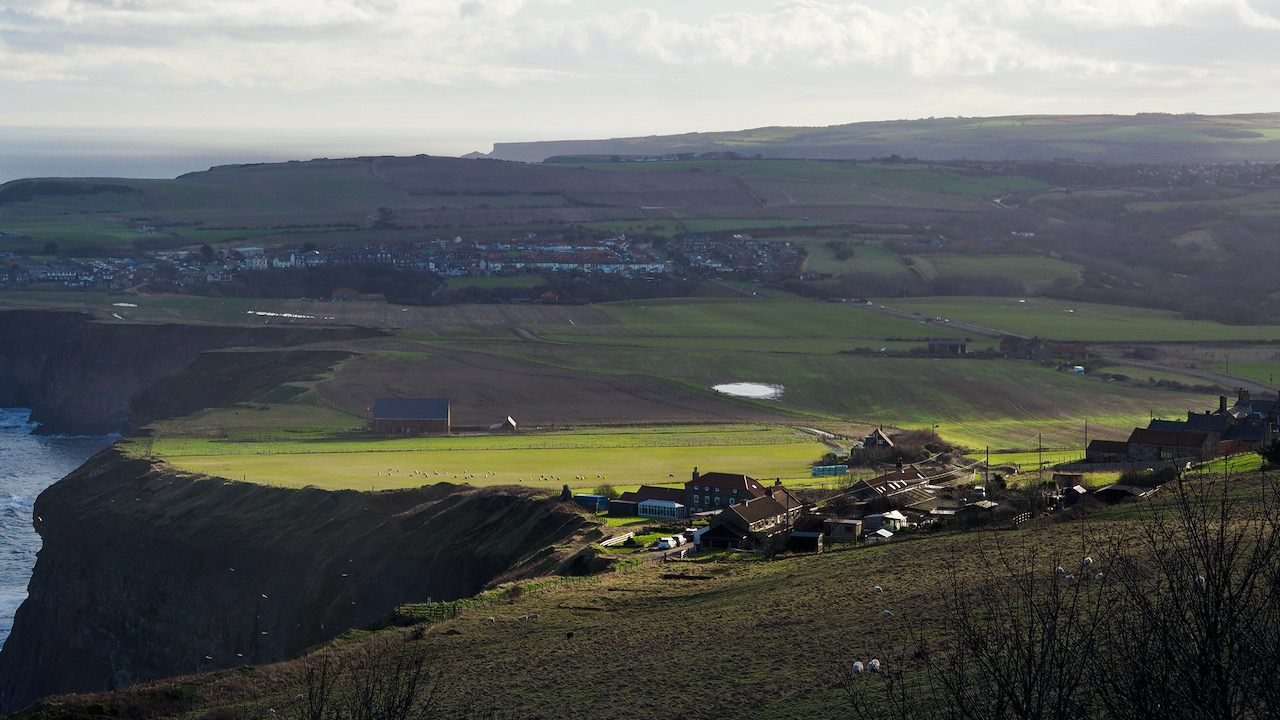The tiny hamlet of Boulby bathes in what seems like a vernal sun, while Staithes, at a distance, remains shrouded under the cloud of winter. The photograph aptly illustrates the hamlet’s proximity to the cliff edge, lining a coastline in constant yet sporadic recession, often marked by landslides along the Cleveland Way1Scheer, Victoria. 2023. ‘“Significant” Filey Cliff Collapse Sparks Cleveland Way Diversion’, BBC News (BBC News) <https://www.bbc.co.uk/news/uk-england-york-north-yorkshire-66437791> [accessed 3 February 2024].
Presently, there’s a couple trekking around the whole of the British coast. They passed here heading south the week before last, and currently are around Hull (their link is here, although I suspect it’ll be transient). This report spurred me to contemplate on the actual length of Britain’s coastline. The couple estimate their journey at 6,000 miles, yet Wikipedia asserts it to be 7,723 miles.
The conundrum arises when deciding where to measure. Is it the coastal footpath, the Mean High Water mark, or the extent up the many rivers and estuaries? Zooming into the mapping reveals smaller features, like inlets and rocks, contributing to an ever-expanding measurement. The mathematician Benoit Mandelbrot posited that coastlines are infinite, drawing on his concept of fractals2‘Coastline Paradox’, Wikipedia <https://en.wikipedia.org/wiki/Coastline_paradox> [accessed 3 February 2024]. This idea proposes that coastlines show self-similarity at differing scales, rendering their length contingent on the scale-rule employed. A paradox unfolds, as the definitive length appears elusive: a smaller ruler reveals more intricacies, thereby increasing the apparent length.
Beyond the intricacies of measurement, the coastline is inherently dynamic. Geological events and daily tides perpetually reshape the land, transforming the familiar map outline into a mere snapshot in time. Instances such as the Stone Age tsunami prompted by the Storrega Slides and the submergence of Dunwich and other villages underscore the dramatic changes that our coastlines have undergone. The tidal surge on the East Coast in 2022, notably at Happisburgh, serves as a poignant example of the ongoing evolution of coastlines3Jones, Charlie. 2022. ‘Happisburgh: The Norfolk Village Crumbling into the Sea’, BBC News (BBC News) <https://www.bbc.co.uk/news/uk-england-norfolk-63822899> [accessed 23 January 2024].
Coastlines resist precise definition, their length embodying a paradox. Boulby basks, Staithes patiently anticipates, while the cliff below them is under incessant pressure. Folk walk its ever-changing contours, tacitly accepting that miles clocked are merely whispers in the face of infinite change. It is the choreography of land and sea that gauges the essence of its character.
- 1Scheer, Victoria. 2023. ‘“Significant” Filey Cliff Collapse Sparks Cleveland Way Diversion’, BBC News (BBC News) <https://www.bbc.co.uk/news/uk-england-york-north-yorkshire-66437791> [accessed 3 February 2024]
- 2‘Coastline Paradox’, Wikipedia <https://en.wikipedia.org/wiki/Coastline_paradox> [accessed 3 February 2024]
- 3Jones, Charlie. 2022. ‘Happisburgh: The Norfolk Village Crumbling into the Sea’, BBC News (BBC News) <https://www.bbc.co.uk/news/uk-england-norfolk-63822899> [accessed 23 January 2024]

Leave a Reply